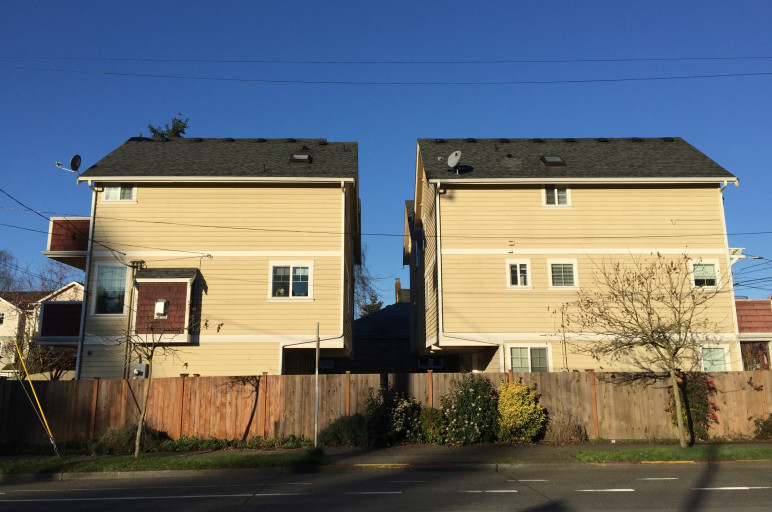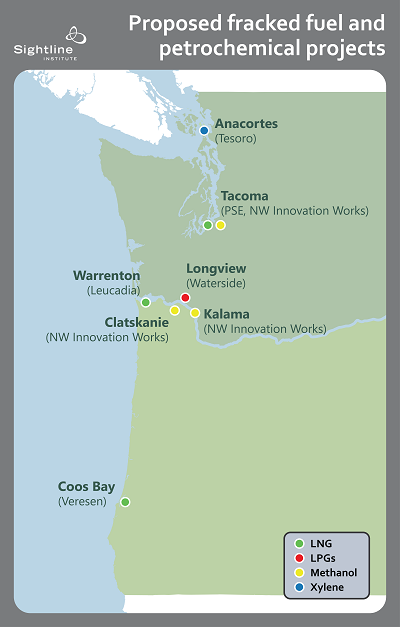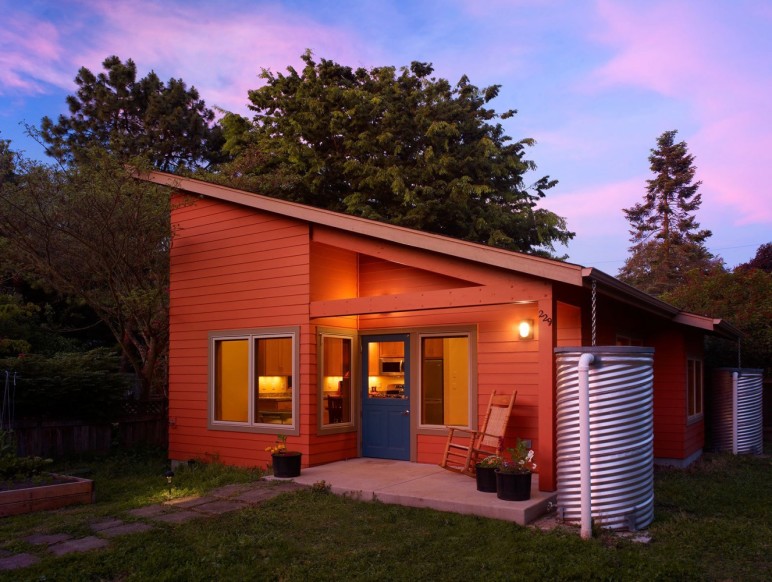Kristin
Funny-shaped districts aren’t the problem with American voting. Electing one representative per district (funny-shaped or otherwise) is the problem. We can solve it with multi-member districts that ensure minority views get represented and it doesn’t matter who draws then district lines. Yes, yes, and more yes.
The Brennan Center’s Democracy agenda: Voting rights, money in politics, and redistricting. (Lots to read—all of it good stuff.)
Wondering how much climate pollution you emit when you drive, bus, or fly? This great infographic shows you that carpooling in a regular gas car is more climate-efficient than driving alone in a Tesla.
Transit-oriented development (TOD), developing dense housing near rail stations, might create most of its benefits from the density, not the rail.
Could the high-stakes brinkmanship around nominating Scalia’s replacement on the Supreme Court bring both parties to the table to create sensible term limits for justices? One can always hope.
Maybe right and left disagree about whether we need more equality of outcomes, but can’t we all agree that we need more equality of opportunity in America?
Tarika
If you’re looking for something good to listen to, I highly recommend a recent episode of This American Life called My Damn Mind, which tells how a young student experiencing a mental health crisis drove himself to the hospital for help and wound up being shot in the chest by armed security guards in his hospital room. The episode was a collaboration with the New York Times; the paper investigated the rise of armed but improperly trained security in hospitals.
The coal industry continues to resist protecting miners from excessive dust inhalation despite the ongoing death toll. Although many think of black lung disease as antiquated or even eradicated, the reality is that the disease killed more than 10,000 miners between 1995 and 2004. A joint study by NPR and the Center for Public Integrity found that black lung cases doubled between 2002 and 2012, and the number of people diagnosed with the worst stages of black lung quadrupled. By 2014, black lung cases had risen to levels not seen since the early 1970s. Why? Some coal companies are mining thin seams of coal and in the process they grind up a lot of the surrounding rock: quartz. Quartz contains silica, and breathing in small silica particles can lead to silicosis and lung cancer. Miners in some geologic regions are breathing in large amounts of silicates in addition to coal dust, and it’s causing more severe lung deterioration. The exposure to silicates could be lessened if coal companies would slow the speed of drilling equipment, but they choose not to do so even though coal production rates are triple what they were in the 1970s. In addition, coal companies self-report whether they are complying with federal rules and there is “widespread gaming of the system,” according to NPR and the Center for Public Integrity. The Mine Safety and Health Administration passed a new rule in 2014 to limit miners’ exposure to coal dust and silicates, the first time coal dust limits had been lowered in 45 years. The new rules aim to cut sampling loopholes and reduce coal dust exposure limits by 25 percent. The agency wanted to cut exposure limits by half, but the rule received strong opposition from the coal industry, which labeled it costly and unnecessary. Speaking of costs, the federal government has helped the coal industry pay $45 billion in benefits related to black lung since 1970.
Keiko
Adding on to Tarika’s podcast recommendation, which I highly suggest as well, here’s a must-watch seven minute video about gun violence in the United States. Vox explains how America doesn’t have more crime than other countries, “it’s that crime in the US is much more lethal.” The number of gun deaths from 2000 to 2013 exceed the number of Americans killed by AIDS, illegal drug overdoses, the Iraq and Afghanistan wars, and terrorism combined. The bottom line—more guns = more deaths; currently there are 300 million guns in the US and counting.
More videos! Start off your weekend right by watching 106-year-old Virginia McLaurin dance with the Obamas. She’s got some serious moves.
Dan
I once asked sustainability guru Paul Hawkin what he thought of The Long Emergency, James Howard Kunstler’s ruthlessly sobering prediction of what running out of oil would look like in North America. Hawken couldn’t hide his disdain for what he felt was the underlying premise of the book, namely, that “people are punks” (and not in the cool, Sex Pistols sense of the word). What he meant is that Kunstler’s doomsday scenarios rested on the assumption that human nature will fail in the face of our imminent transformational crises.
In 2010, Kunstler told me over a drink that the project of the American suburbs is the greatest misallocation of resources in the history of the world. Fair enough. But he also went on about how within five years, the airline industry would fall apart and only elites would fly. Kunstler’s larger-than-life cynical persona—succinctly captured by the name of his blog, Clusterf*** Nation—is not for everyone. Yet there is no denying that his 1993 Geography of Nowhere is an all time classic in the city builder canon.
And wait, what? Kunstler also writes novels? Yes, and I was as skeptical as anyone, but there it was, a copy of World Made By Hand staring back at me from the used bookstore shelf. Once upon a time I fancied the idea of being a novelist and devoured writer’s writing (David Foster Wallace, etc.) but I’ve since lost patience for virtuosity, and can’t get through a novel unless it grabs my heart in some way. And Kunstler’s book did.
World Made By Hand tells the story of a Long Emergency-era summer in a small town in upstate New York. Sure, it’s a bit rough around the edges, but Kunstler created characters I could care about and a plot with seductive arcs. Not to mention that for anyone who has noticed all the ways in which western culture has dangerously overextended itself, there’s something irresistible about a downfall scenario brought to life in prose.
And no, this isn’t a story of punks—think more Little House on the Prairie than Mad Max. Nor does Kunstler oversell the charms of the simple life. In short, it’s a smaller but harder world that brings out the human in people for better or for worse.




















